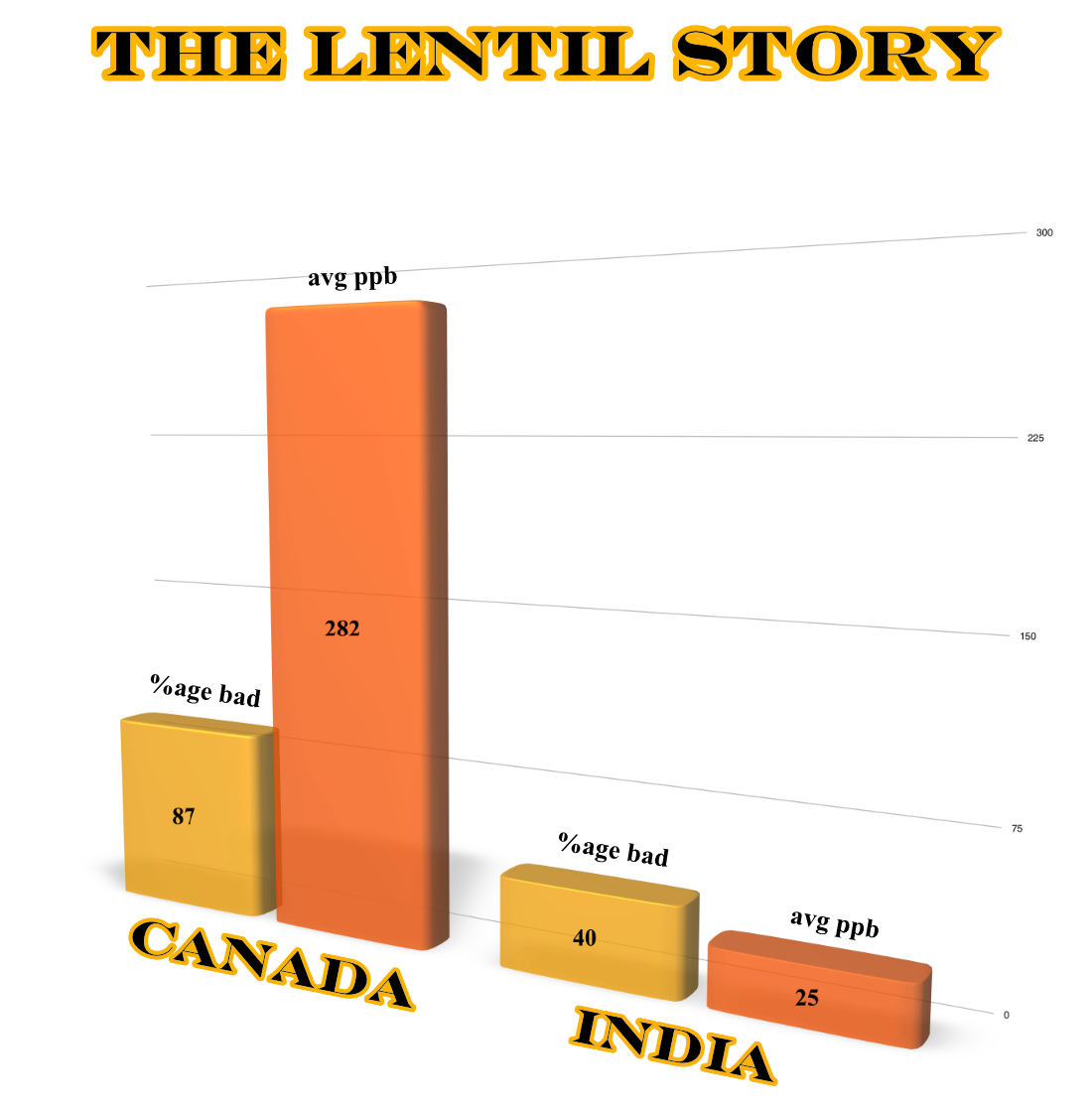Hello folks.
Today I bring to you another fifteen minutes of rant – me talking to myself in a video, about glyphosate poisoning of food, as in north America, specifically from a Canadian’s perspective.
We are supposed to have monthly brainstorming meetings, to appraise each other of what is going on, and to get folk’s opinion on what to do about it all. Each brings his or her own perspective and view point, and we search for a path out of this topic jungle.
The first of these meetings has not yet happened, as Richard Miller is organizing it. Meanwhile, I could not wait and had to come out with his blog and a fifteen minute video – about lentil, as produced in two countries – Canada and India.
This blog and update is prepared after going through the first 3,000 records entered by CFIA, covering almost whole of year 2015. It also reflects my frustration and bafflement as well as the difficulty in dealing with different entries of similar foods using different names or spellings, which makes it harder for the software to analyze the data. There is a famous saying about computerization – garbage in, garbage out. So I had to consider creating an extra column to the side and re-entering some of the sample identifications using more descriptive and standardized terms, which the computer can then pick up and analyze or compare. But doing that for thousands of records is backbreaking, tiring and frustrating.
Frustration also from the fact that I have not found a single regular wheat item or its derivatives such as flour or bread, in the first 3,000 records. I am extremely puzzled and frustrated about it.
But, in absence of any wheat item in the first 3,000 records, the next major food groups turns out to be rice and lentils. Rice turns out to be reasonably clean of glyphosate, though even here, Canadian Rice fair poorly against most others.
But this blog and video is about lentils, which has reasonably high glyphosate content, especially if it is grown in Canada. Samples from United States has not been considered for this graph and video. Perhaps it will be included for comparative study later on. Also, a large group of food samples that contain lentils are marked “unknown”. I might analyze them as described, i.e. “unknown”, which may not be too helpful, but I cannot help that. I suspect most of the unknown samples are of Canadian origin, but cannot prove it.
Readers may have to reach a decision on them by themselves, for now.
Anyhow, the tale of two lentils is as follows:
Canadian lentils have almost 90% samples containing glyphosate, and average content is 282 ppb.
Indian lentils have 40% samples with glyphosate, and average level is 25 ppb.

Tale of two lentils
